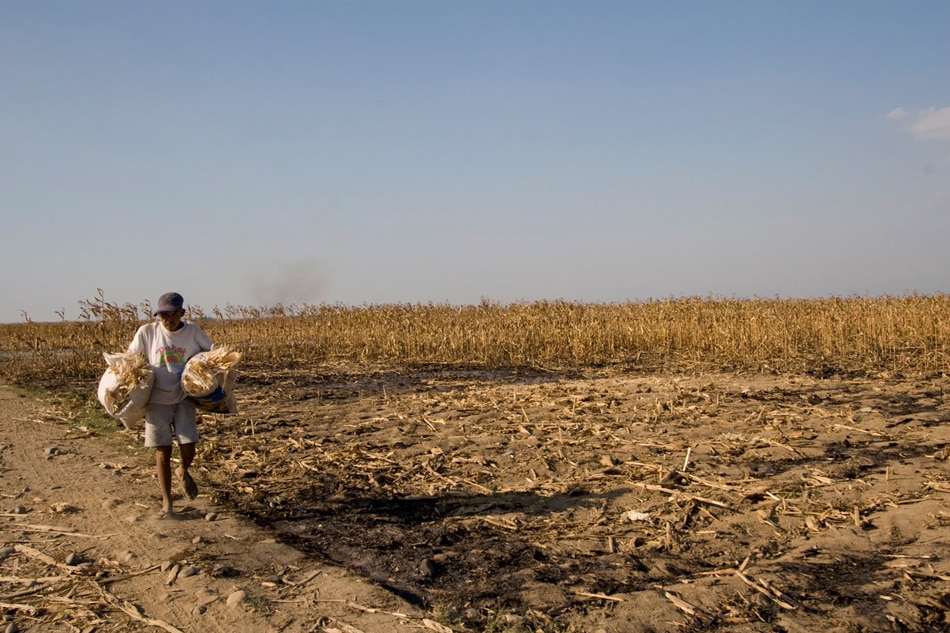Nueva Ecija, Cavite face drought ahead of El Niño's peak: PAGASA | ABS-CBN

Welcome, Kapamilya! We use cookies to improve your browsing experience. Continuing to use this site means you agree to our use of cookies. Tell me more!
Nueva Ecija, Cavite face drought ahead of El Niño's peak: PAGASA
Nueva Ecija, Cavite face drought ahead of El Niño's peak: PAGASA
Raphael Bosano,
ABS-CBN News
Published Dec 20, 2023 01:57 PM PHT
MANILA – Nueva Ecija and Cavite provinces are already experiencing drought even before the expected peak of El Niño in the first quarter of 2024, according to the state weather bureau PAGASA.
The El Niño phenomenon is underway in the Philippines and is expected to persist next year, with climate models suggesting that it will likely peak around March or April.
MANILA – Nueva Ecija and Cavite provinces are already experiencing drought even before the expected peak of El Niño in the first quarter of 2024, according to the state weather bureau PAGASA.
The El Niño phenomenon is underway in the Philippines and is expected to persist next year, with climate models suggesting that it will likely peak around March or April.
By this time, around 51 to 63 areas are seen to experience prolonged droughts or when rainfall is below normal for 5 consecutive months.
By this time, around 51 to 63 areas are seen to experience prolonged droughts or when rainfall is below normal for 5 consecutive months.
DRY SPELL, DRY CONDITION
A dry spell happens when rainfall is below normal for 3 consecutive months, while a dry condition is 2 consecutive months of below-normal rainfall conditions.
A dry spell happens when rainfall is below normal for 3 consecutive months, while a dry condition is 2 consecutive months of below-normal rainfall conditions.
As of December 17, data showed that 25 areas had begun experiencing dry spells while 5 more had dry conditions.
As of December 17, data showed that 25 areas had begun experiencing dry spells while 5 more had dry conditions.
ADVERTISEMENT
Provinces in the Cordillera Administrative Region, Central Luzon, Metro Manila, Rizal, Palawan, Negros Occidental, Basilan, and Maguindanao are among the areas experiencing dry spells.
Meanwhile, Abra, Batanes, Bohol, Bukidnon, and Misamis Oriental are experiencing dry conditions.
Provinces in the Cordillera Administrative Region, Central Luzon, Metro Manila, Rizal, Palawan, Negros Occidental, Basilan, and Maguindanao are among the areas experiencing dry spells.
Meanwhile, Abra, Batanes, Bohol, Bukidnon, and Misamis Oriental are experiencing dry conditions.
STRONG EL NIÑO
Ana Liza Solis, PAGASA's chief of climate monitoring and prediction section, said that in the last 4 weeks, temperatures have continued to rise in the Tropical Pacific indicating the presence of strong El Niño.
"Mas suppressed ang convection so wala o kakaunti ang pag-ulan lalo na sa may parte ng Pilipinas and Indonesia," she said.
Forecasts by PAGASA show that the western portion of Luzon will bear the brunt of below-normal rainfall which — if coupled with long periods of drought — could impact soil moisture.
"Malaki ang implication kasi kahit dumating ang tag-ulan sa mga areas na ito, pero galing sa long dry spell, it would take time to replenish the moisture," Solis noted.
"Although mataas ang likelihood ng climate anomalies gaya ng pagkakaroon ng kaunting bilang ng bagyo na pumasok sa atin, but the impact lalo na on different sectors, 'yun po ay magkakaiba. Hindi pare-pareho ang magiging impact whether the El Niño is strong or not," she added.
Experts urge residents in areas vulnerable to the effects of El Niño to prepare for its impacts, such as conserving and ensuring a stable supply of potable water.
STRONG EL NIÑO
Ana Liza Solis, PAGASA's chief of climate monitoring and prediction section, said that in the last 4 weeks, temperatures have continued to rise in the Tropical Pacific indicating the presence of strong El Niño.
"Mas suppressed ang convection so wala o kakaunti ang pag-ulan lalo na sa may parte ng Pilipinas and Indonesia," she said.
Forecasts by PAGASA show that the western portion of Luzon will bear the brunt of below-normal rainfall which — if coupled with long periods of drought — could impact soil moisture.
"Malaki ang implication kasi kahit dumating ang tag-ulan sa mga areas na ito, pero galing sa long dry spell, it would take time to replenish the moisture," Solis noted.
"Although mataas ang likelihood ng climate anomalies gaya ng pagkakaroon ng kaunting bilang ng bagyo na pumasok sa atin, but the impact lalo na on different sectors, 'yun po ay magkakaiba. Hindi pare-pareho ang magiging impact whether the El Niño is strong or not," she added.
Experts urge residents in areas vulnerable to the effects of El Niño to prepare for its impacts, such as conserving and ensuring a stable supply of potable water.
The Department of Environment and Natural Resources has stressed the need for local governments to take the lead in assessing their needs and the risks of El Niño and other climate impacts to their communities.
The Department of Environment and Natural Resources has stressed the need for local governments to take the lead in assessing their needs and the risks of El Niño and other climate impacts to their communities.
ADVERTISEMENT
ADVERTISEMENT


